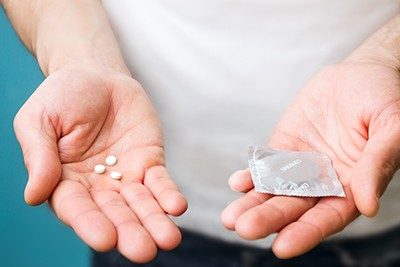FOR IMMEDIATE RELEASE
ACS News Service Weekly PressPac: July 28, 2021
A reversible male contraceptive, targeted to the testes with magnets
Women have several choices for long-lasting, reversible contraceptives, but most options for men are either single-use, such as condoms, or difficult to reverse, like vasectomies. Now, in a step toward a safe, long-lasting and reversible male contraceptive, researchers reporting in ACS’ Nano Letters have developed magnetic, biodegradable nanomaterials that reduced the likelihood of mice fathering pups for at least 30 days.
Elevated temperatures, which can be caused by wearing too-tight pants or underwear, can decrease sperm count in men. Some researchers have explored the more intense heating of nanomaterials injected into the testes as a form of male birth control. However, the injection can be painful, the heating can damage skin, and most nanomaterials tested so far are not biodegradable. Weihua Ding, Fei Sun and colleagues wanted to develop a safe, effective magnetic-thermal approach to male contraception that doesn’t need to be injected directly into the testes.
The researchers tested two forms of iron oxide nanoparticles, which are biodegradable and can be guided and heated with magnetic fields, as male contraceptives. One type of nanoparticle was coated with polyethylene glycol (PEG) and the other with citric acid. Although the PEG-coated nanoparticles could be heated to higher temperatures, they were not as easily manipulated by magnets as the other ones. So the researchers injected repeated doses of citric acid-coated nanoparticles into the bloodstream of mice for 2 days, guided the nanomaterials to the testes with magnets, and then applied an alternating magnetic field to the area for 15 minutes. The nanoparticles heated the testes to a temperature of 104 F, shrinking them and inhibiting spermatogenesis before gradual recovery 30 to 60 days after treatment. The mice couldn’t father any pups 7 days after treatment, but they were back to fathering about 12 pups per pregnant female at day 60. The nanoparticles were non-toxic to cells and were gradually eliminated from the body, offering new possibilities for male contraception, the researchers say.
The authors acknowledge funding from the National Key Research and Development Program of China, the Natural Science Research of Jiangsu Higher Education Institutions of China and the Open Fund of Key Laboratory of Advanced Display and System Applications of Ministry of Education (Shanghai University).
###
The American Chemical Society (ACS) is a nonprofit organization chartered by the U.S. Congress. ACS’ mission is to advance the broader chemistry enterprise and its practitioners for the benefit of Earth and all its people. The Society is a global leader in promoting excellence in science education and providing access to chemistry-related information and research through its multiple research solutions, peer-reviewed journals, scientific conferences, eBooks and weekly news periodical Chemical & Engineering News. ACS journals are among the most cited, most trusted and most read within the scientific literature; however, ACS itself does not conduct chemical research. As a leader in scientific information solutions, its CAS division partners with global innovators to accelerate breakthroughs by curating, connecting and analyzing the world’s scientific knowledge. ACS’ main offices are in Washington, D.C., and Columbus, Ohio.
To automatically receive press releases from the American Chemical Society, contact newsroom@acs.org.
Note: ACS does not conduct research, but publishes and publicizes peer-reviewed scientific studies.
Media Contact
ACS Newsroom
newsroom@acs.org


